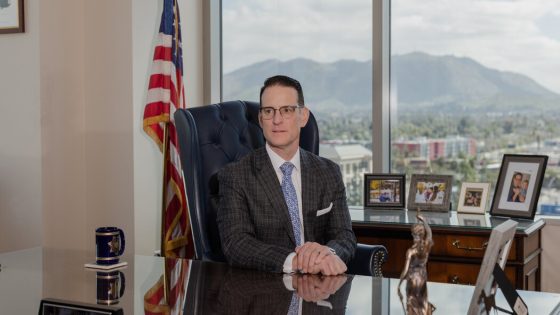In a years-long quest, the American news media continues to send its journalists out into the heart of red state America with the goal of discovering some supposedly hidden and mysterious truth – a Rosetta Stone of sorts – for understanding the collective political insanity of the Age of Trump and the enduring power of its leader. After almost nine years of such expeditions, one could reasonably assume that the American news media would have finally found some definitive answer. Alas, and for a variety of reasons (most notably institutional and leadership failings to ask the correct questions and a fear of accepting the obvious answers, such as the country’s deep well of white supremacy and racism), that is not the case.
Fortunately, there is a small and growing number of journalists and other observers who are finally getting closer to solving this supposed riddle. If the American people and their leaders want to save their democracy — and themselves — they need to heed these warnings and insights.
NPR political correspondent Danielle Kurtzleben recently traveled to a Trump political rally in Georgia and shared this account of how his MAGA people have found community and meaning in their lives:
At 6:30 a.m. it was still dark in Rome, Ga. But people had been lined up for a long time already, still nearly 12 hours before Trump was set to take the stage at another of his rallies.
Some had waited all night amid the crowd-control gates, in the bottom level of a downtown parking garage. At the very front of the line, Sharon Anderson waited under a blanket on a camp chair.
She told me this was her 50th rally. Why does she attend so many?
“I want to show my support for the best president in the history of this nation,” she explained.
Anderson and some friends were all wearing tops styled to look like baseball shirts, with a big “47” on the back (for Trump’s quest to be the 47th president) and “FRONT ROW JOES” on the front. Those “Joes” are a team of Trump superfans who get right up front at rallies.
I asked Anderson how she would describe a Trump rally to someone who has never been to one.
“Oh, it’s very uplifting, encouraging, exciting,” she said. “You just can’t describe it verbally.”…
But nine years in, these surreal events say so much more about the continued Trump phenomenon.
A Trump rally has the feel of an all-day pep rally mixed with a megachurch service — except with Trumpism as the religion. The rallies are places where a movement largely defined by grievance can be together, away from opponents — not to mention assertions that Trump lies and is harmful to democracy.
They are places to see that for many Americans, Trumpism isn’t just about politics; it’s a core part of their identities.
Contrary to what the hope peddlers and institutionalists would like to believe, Trumpism is not a problem of one or two election cycles. Political identities are forged when we are young. The MAGA people and other Trump followers are training their children to be true believers in the movement.
Kurtzleben continues:
Not far away from Sharon — maybe 20th in line — Lauren Tucker waited. She and her mother traded off holding their place in line overnight. This would be her first rally.
“Everybody here, all the people that were in line before us, they have been so amazing all night long. And they told us exactly what to expect. They helped us get our little buttons and they’ve just been wonderful,” Tucker exclaimed. “It’s almost like a little family.”
Tucker is the mother of six, and her 6-year-old son played on a tablet next to her…
Trumpism and the American antidemocracy movement will continue long into the future, morphing and changing and adapting to fit a given social and political moment, but with the toxic core values intact.
For now, his campaign rallies are a therapeutic space where Trump’s biggest fans experience community, meaning, and pleasure in each other’s company, and from basking in their Dear Leader’s energy and dark charisma. Trump’s rallies are a space for his followers to worship him as a type of divinely chosen warrior, a force for vengeance on their behalf, who has been anointed by “god” and “Jesus Christ” to turn America into a type of plutocratic theocracy where people like them will be given special powers and “rights” to rule over all others. Trump has harnessed the religious fervor and cult-like devotion of his followers to great effect. To that point, he is now selling his version of the Bible with the proceeds going to his war chest.
At the New York Times, Michael Bender focuses in on Trumpism as a type of political religion:
Long known for his improvised and volatile stage performances, former President Donald J. Trump now tends to finish his rallies on a solemn note.
Soft, reflective music fills the venue as a hush falls over the crowd. Mr. Trump’s tone turns reverent and somber, prompting some supporters to bow their heads or close their eyes. Others raise open palms in the air or murmur as if in prayer.
In this moment, Mr. Trump’s audience is his congregation, and the former president their pastor as he delivers a roughly 15-minute finale that evokes an evangelical altar call, the emotional tradition that concludes some Christian services in which attendees come forward to commit to their savior.
“The great silent majority is rising like never before and under our leadership,” he recites from a teleprompter in a typical version of the script. “We will pray to God for our strength and for our liberty. We will pray for God and we will pray with God. We are one movement, one people, one family and one glorious nation under God.”
The meditative ritual might appear incongruent with the raucous epicenter of the nation’s conservative movement, but Mr. Trump’s political creed stands as one of the starkest examples of his effort to transform the Republican Party into a kind of Church of Trump.
In a new much-discussed article at the Guardian, Rachel Leingang surveys the larger landscape of Trump’s rallies and cautions that the American news media has too often tried to make Trump’s communication style, persona, and apparent hyper-manic behavior into something normal and coherent when it is not:
Trump’s tone, as many have noted, is decidedly more vengeful this time around, as he seeks to reclaim the White House after a bruising loss that he insists was a steal. This alone is a cause for concern, foreshadowing what the Trump presidency redux could look like. But he’s also, quite frequently, rambling and incoherent, running off on tangents that would grab headlines for their oddness should any other candidate say them.
Journalists rightly chose not to broadcast Trump’s entire speeches after 2016, believing that the free coverage helped boost the former president and spread lies unchecked. But now there’s the possibility that stories about his speeches often make his ideas appear more cogent than they are – making the case that, this time around, people should hear the full speeches to understand how Trump would govern again.
Watching a Trump speech in full better shows what it’s like inside his head: a smorgasbord of falsehoods, personal and professional vendettas, frequent comparisons to other famous people, a couple of handfuls of simple policy ideas, and a lot of non sequiturs that veer into barely intelligible stories….
Trump’s tangents aren’t new, nor is Trump’s penchant for elevating baseless ideas that most other presidential candidates wouldn’t, like his promotion of injecting bleach during the pandemic.
But in a presidential race among two old men that’s often focused on the age of the one who’s slightly older, these campaign trail antics shed light on Trump’s mental acuity, even if people tend to characterize them differently than Joe Biden’s. While Biden’s gaffes elicit serious scrutiny, as writers in the New Yorker and the New York Times recently noted, we’ve seemingly become inured to Trump’s brand of speaking, either skimming over it or giving him leeway because this has always been his shtick.
Trump, like Biden, has confused names of world leaders (but then claims it’s on purpose). He has also stumbled and slurred his words. But beyond that, Trump’s can take a different turn. Trump has described using an “iron dome” missile defense system as “ding, ding, ding, ding, ding, ding. They’ve only got 17 seconds to figure this whole thing out. Boom. OK. Missile launch. Whoosh. Boom.”
These tangents can be part of a tirade, or they can be what one can only describe as complete nonsense.
But for all the sharp insights offered by the above accounts (and others), they lack a unifying explanation. As historians, political scientists and other experts have highlighted, the MAGA movement, like other authoritarian populist movements, is more of a force and experience than a coherent ideology. Likewise, Trump is more than just a political leader and a man, he is a symbol.
Ultimately, what is happening in America with the rise of Trumpism and the larger right-wing antidemocracy movement is not new. The Nuremberg Municipal Museums website describes Nazi Party Rallies in Hitler’s Germany in the following way.
The Nazi Party Rallies serve to present the Nazi regime’s self-image both domestically and abroad, and are intended as an embodiment of the “Volksgemeinschaft” and the “Führer” myth. Parades, omnipresent uniforms, and military displays are directly related to the Nazi state’s preparations for war. First and foremost, however, the Nazi Party Rallies appeal to the participants’ and spectators’ emotions. Here politics are conceived not as something to be thought out and understood, but as an “experience.” [my emphasis added]
This description could be easily updated to describe Trump’s MAGA rallies some ninety years later.
Learn from history or you will be doomed to repeat it. With less than seven months to Election Day, the American people and their news media are rapidly running out of time to internalize and correctly apply those lessons.
Source Agencies



